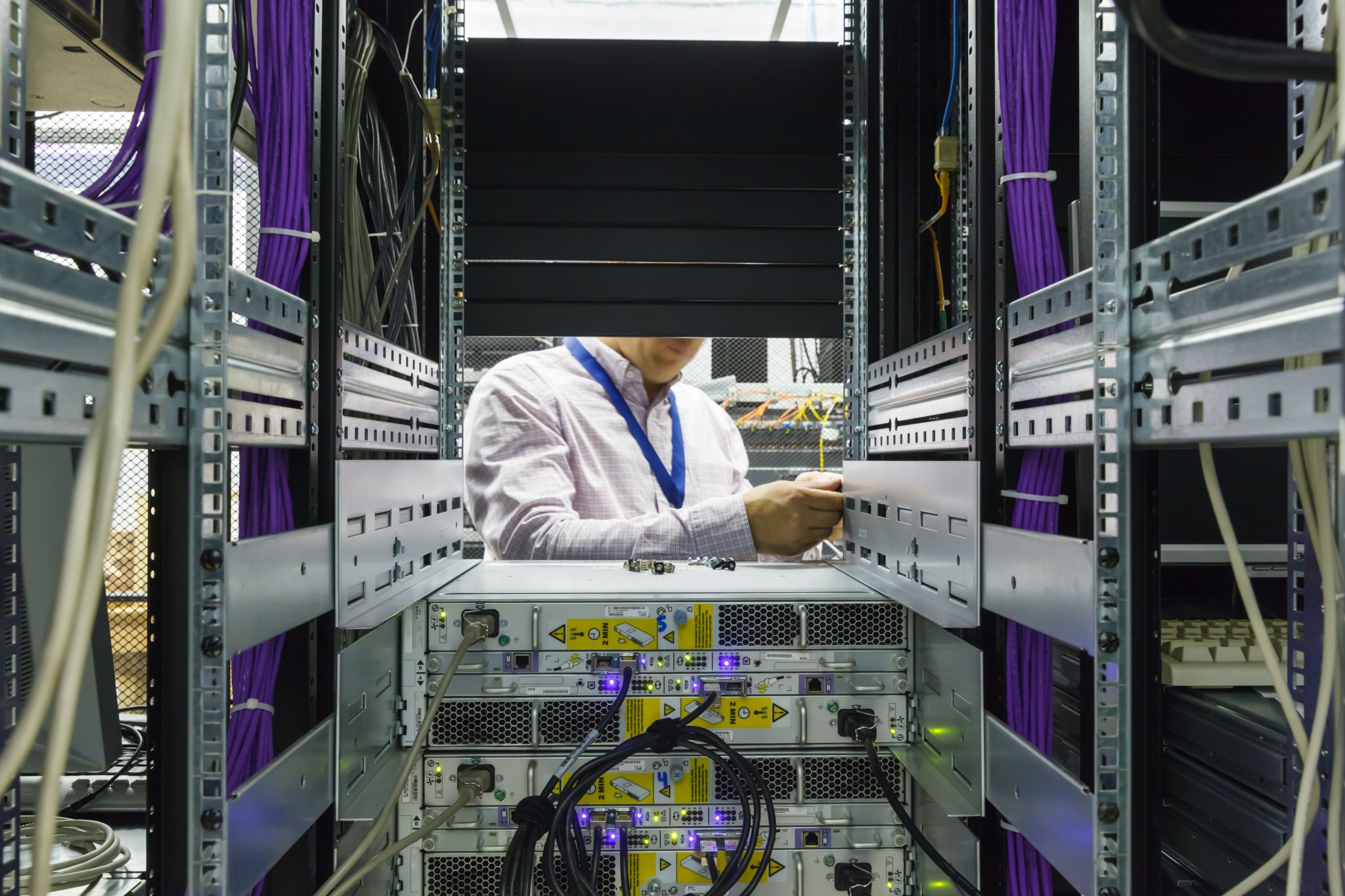What’s in store for IT professionals in 2017? Yes, there will be more innovation and evolution, as there always is. But over the next five years, datacenters — and IT pros — will be stressed by an increase in infrastructure demands as businesses look to do more with less. Though the prospect may seem daunting, there are several ways IT pros can prepare.
On the business side, companies will look to revamp their internal datacenter infrastructure so that they have the same cost and scalability as current cloud-service providers. Such a combination of enterprise and advanced IT expectations underscore the theme of new trends that will affect data centers. Let’s look at the hottest trends for 2017:

Web-scale IT
Web-scale IT is an architectural approach that follows the pattern of global-class computing. It delivers the features of large cloud-service providers in enterprise IT settings. In 2013, web-scale IT operations were limited to less than 10 percent of worldwide enterprises.
But Web-scale IT is expected to be operating in 50 percent of international enterprises by next year, a giant leap from where it was just three years ago. Big cloud-service providers have reinvented the way IT services can be delivered. If enterprises want to remain on board, they need to integrate the practices, processes, and architecture of these important cloud providers. Web-scale IT is the answer, allowing enterprises to mimic the way infrastructure and applications are delivered by giant cloud providers such as Amazon Web Services. Most datacenters have been designed from the perspective of industrial engineering that looks for opportunities to reduce costs and waste, but not primarily to deliver services in an agile manner.
This is far beyond redesigning facilities simply for greater energy efficiency; it also includes in-house design of core hardware components, like networks, servers, and storage. Web-oriented architecture (WOA) permits developers to create highly resilient and flexible systems that recover rapidly from failure. At the same time, WOA-based software architectures give development teams the chance to quickly operate by themselves, while enhancing the overall resiliency of applications. IT organizations need to rethink the way apps are designed to meet the needs of web-scale IT environments.
Taken together, a new architectural approach and new application design shifts the focus of enterprises toward operations design. This means that after evaluating methods to improve performance from the beginning, IT organizations must now rethink their operational support. The combination of new software architectures with devOps approaches may be the catalyst to boost an IT company’s ability to change. It is predicted that 25 percent of worldwide enterprise CIOs will have had prior involvement in corporate web-scale IT initiatives by 2020, up from less than 5 percent in 2013.
Open philosophies
Open development deconstructs the datacenter to its lowest-level components, which combine together through open standards. Though the percentage of enterprise applications designed to tackle horizontal scaling is below 2 percent, enterprise IT should still shy away from lifting legacy applications onto an open infrastructure. Rather, they should renew focus on building block infrastructure, and reconsider hardware contracts to prepare for greater open-standard software and hardware.
Automation trends
IT automation is set to undergo a major transformation in 2017 as it begins contending with the problem of IT administrators who stick to scripts. These IT pros enjoy creating good scripts and correcting any scripts by peers. But when they leave the company, they often leave behind only minimal documentation of their work.
This has made the evolution of IT automation necessary. IT companies in 2017 will opt for a more hands-on, interactive path by appointing IT automation leaders, automating the process of script discovery, and richly rewarding administrators for forming structured quality scripts that work and are understood even after their creator leaves the company.
Big data

Big data solves problems. This is why 2017 should see the development of new data architectures for handling real-time input and unstructured data. But data architecture isn’t the largest roadblock to enterprise IT adoption of big data analytics; it’s the lack of skills in the field. The talent pool for proficient technicians who can work with big data is severely low. This limitation of skilled workers causes serious problems in big data analysis.
However, things are looking up, as schools such as New York University, North Carolina State University, and Carnegie Mellon University are coming to the aid of companies seeking help with big data by training fresh batches of data scientists through their cross-disciplinary programs. This trend will continue in 2017, but despite the best efforts of these schools, the supply will still fall short of the demand.
This is the reason why companies are employing new strategies for big data. They are building their own unique analytics and digital brand by not hiring experienced professionals, but by choosing instead to groom talent from within or handpick them right out of college. Rotational programs involving a circulation of talent through various business silos is becoming common to help them deal with big data in all its forms. Embedding of analytics is being done through the use of cross-disciplinary teams while they are partnering up with universities to groom their own talent for analytics positions. Such methods should become more widespread in 2017 and beyond until the skill level for big data analysts goes up.
Mobility
Most companies now boast of a mobile workforce, as well as customers who are mobile. The “bring your own device” (BYOD) practice is seeing increasing adoption as organizations grow better at managing security issues emanating from the problems caused by a myriad number of devices and operating systems. Sadly, IT service desks continue to be ill-equipped to deal with the problem as there is nothing that prevents the staff from accessing personal apps and data on their own devices. This seriously undermines productivity and adds security problems. Moreover, such a situation has resulted in the idea that the IT sector is out of touch. This is why, in 2017, data segregation is poised to become a big trend, where the personal data of employees is completely separate from business data and applications, even though they’re on the same device.
Bimodal IT
Bimodal IT involves the maintenance of traditional IT practices while simultaneously introducing new and exciting processes in a safe and secure way. 2017 will witness IT companies using the “pace-layering concept” from app development on the IT roadmap. Pace layering as a concept has been around for several years, but it will gain steam in an IT environment in 2017.
Corporate mLearning

The trend of mLearning, or mobile learning, for corporate employees will continue to rise in 2017. As the use of personal mobile phones for work becomes popular, software will be developed to help them take work on the road with them. mLearning provides a flexible training opportunity that exceeds the scope of beyond-the-job training. It integrates an individually designed methodology and offers easy-to-remember micro-learning lessons that may be found on-demand by users. Companies report an improvement in employee engagement, adoption, and knowledge retention through mLearning. This concept works on a real-time basis, which means that it is used to communicate fresh information to staff on the go. mLearning is soon going to become a necessity for the IT sector.
mLearning provides several advantages to organizations that outsource human resources from different zones. Corporate cultures with flexible schedules can use mobile training so that the staff can work outside or remotely of the cubicle environment. Companies that want to prepare their employees for the future, and wish to develop their skills and knowledge on a software platform, will consider mLearning in 2017.
New technologies and trends will be at the center of digital transformation efforts in 2017, and some will continue beyond the next year. In a future where change is the only constant, the IT industry’s task is to build a business model that is swift, flexible, and has been designed carefully for longevity.
Photo credits: Shutterstock



